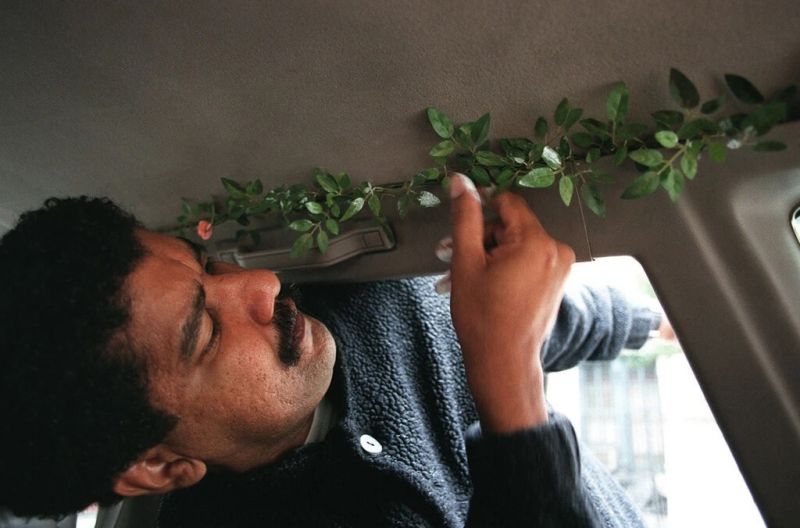
On Monday, Congress authorized the creation of a Latino museum as part of a $2.3-trillion year-end spending bill. This is long overdue. For decades, activists have been fighting to establish a Latino museum on the Washington Mall. Its creation is essential to documenting the community’s contribution and to the education and future of all Americans.
And yet, some have questioned whether Latinx people, the United States’ largest “minority”, really need a new museum of their own, arguing that museums that collect or exhibit objects related to a particular ethnic or cultural group are divisive. Indeed, earlier this month, Senator Mike Lee of Utah blocked bipartisan legislation to establish a national museum dedicated to our stories , citing fears that the museum would “drive wedges among Americans”, and “worsen societal divides”. Others have argued that such an institution would further marginalize our art and our history.
Ideally, Latinx history — and for that matter, the history of all marginalized groups that are part of this nation — should be a central part of all museums and cultural institutions. But we’re not there yet. Even worse, systemic racism has made it so that our art, and our stories, continue to be overlooked within these spaces, which remain overwhelmingly white.
On the heels of a summer of reckoning over race, cultural institutions are now facing calls to better represent people of color, underscoring the important work that culturally and ethnic-specific museums have historically played.
Ethnic art organizations emerged in the late 1960s as part of larger civil rights demands for representation. Among those established then were the Studio Museum in Harlem, El Museo del Barrio, Taller Boricua, Self Help Graphics & Art.
Many of these legacy cultural institutions still find themselves fulfilling the same foundational role they served when they were first established. They continue to work to elevate, document and support marginalized artists, in a context where mainstream museums’ leadership, curatorial staff and collections remain white dominated.
Multiple studies have shown the skewed racial makeup of most American museums. For instance, a 2015 Mellon Foundation report on museum demographics, the first comprehensive study of staff diversity ever conducted on museums, showed non-Hispanic whites made up 84 percent of curators, educators and directors.
A 1994 report of the Smithsonian Institution Task Force on Latino Issues, titled Willful Neglect, showed systematic exclusion of Latinx culture and history in the Smithsonian Institution, calling for the hiring of Latinx curators to help direct the Smithsonian’s priorities in research, collections and exhibitions.
Yet over the past three decades, the task of reworking a mostly white institutional history and collection at the Smithsonian remains slow and daunting. In fact, a 2018 study by U.C.L.A.’s Latino Policy & Politics Initiative and its Chicano Studies Research Cente r, evaluating what progress had been made in the 24 years since the initial 1994 study, found that the Smithsonian’s Latinx work force failed to keep pace with the growth of the Latinx population, which had doubled to almost 18 percent of the total population since the first report was issued. The 2018 report also found that Latinx people are still missing from executive positions.
Ethnic-specific art and culture institutions hire and exhibit artists of color, filling the void left by the nation’s largest and major museums. Indeed, Latinx-specific spaces were foundational to the career and development of many of our current “art stars”, from MacArthur “genius” grantees, such as artists Pepón Osorio and Amalia Mesa-Bains — both of whom exhibited at El Museo del Barrio, Galería de la Raza and the Mexican Museum of San Francisco at the start of their careers — to younger generations, such as artist Ramiro Gomez, who was “discovered” after his first exhibition at the Chicano Studies Research Center Library of U.C.L.A. in Los Angeles.
There are countless other examples of Latinx artists and creators that have been sustained by ethnic-specific museums decades before they are “seen” and recognized in mainstream spaces. Most important, as an educator I think of all the students who only learn about these artists and histories by visiting Latinx-specific spaces, because they are not visible elsewhere.
Still, there are some critics who deride the value of “ethnic-specific” spaces — as politically threatening, but also ghettoizing. Even within our community many bemoan the hyphenated space as less valuable, tokenizing and, ultimately, as a self-imposed silo — overlooking how they are the product of a history of racialization and exclusion that make them so politically necessary.
Undoubtedly, challenging racism demands a radical transformation of all of our institutions. But it’s worth noting that we depend on these spaces to explore in greater detail and depth the diversity within diversity that characterizes Latinx communities.
With approval from the House and the Senate, the bill now needs presidential approval. Once the act is signed into law, we will then embark on the most important part of the process: building and planning a museum that is inclusive and representative of our diverse communities.
Arlene Dávila, the founding director of New York University’s Latinx Project, is the author of Latinx Art: Artists, Markets and Politics.
